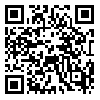Volume 4, Issue 1 (March 2022)
IEEPJ 2022, 4(1): 136-145 |
Back to browse issues page
1- Master Student, Department of Psychology, Bandar Abbas Branch, Islamic Azad University, Bandar Abbas, Iran
2- Assistance Professor, Department of Psychology, Bandar Abbas Branch, Islamic Azad University, Bandar Abbas, Iran. , nooshin.taghinejad@gmail.com
2- Assistance Professor, Department of Psychology, Bandar Abbas Branch, Islamic Azad University, Bandar Abbas, Iran. , nooshin.taghinejad@gmail.com
Abstract: (1935 Views)
The purpose of this study was to investigate the role of self-esteem, five personality factors and age in the prediction of Nomophobia among students in Bandar Abbas city. In so doing, a correlational design was used. The statistical population consisted of all male and female students of Bandar Abbas universities in the academic year 2018. For this purpose, 378 students (250 females and 128 males) were selected from Bandar Abbas universities by stratified random sampling. The participants completed the questionnaire of Azadmanesh et al.’s Nomophobia Questionnaire, Five-Factor Personality Questionnaire, Short Version (BFI 10) and Rosenberg Self-Esteem Scale. Data were analyzed using descriptive statistics and regression analysis. The results showed that self-esteem with beta coefficient of 0.16, conscientiousness with beta coefficient of 0.18, and age with beta coefficient of 0.21 could negatively and significantly predict the students' nomophobia. The neuroticism with beta coefficient of 0.16 positively and significantly predicted the students' nomophobia. Also, the results indicated that 19% of students’ nomophobia variance was explained by predictor variables.
Type of Study: Original |
Subject:
Evolutionary Psychology
Received: 2021/08/14 | Accepted: 2021/09/27 | Published: 2022/03/1
Received: 2021/08/14 | Accepted: 2021/09/27 | Published: 2022/03/1
References
1. Argumosa-Villar, L., Boada-Grau, J., & Vigil-Colet, A. (2017). Exploratory investigation of theoretical predictors of nomophobia using the Mobile Phone Involvement Questionnaire (MPIQ). Journal of adolescence, 56, 127-135. [DOI:10.1016/j.adolescence.2017.02.003]
2. Azadmanesh, h., Ahadi, H., & Manshaee, G. (2016). Developing and standardization of the mobile concept of semantic differentiation scale means. Quarterly of Educational Measurement, 7(25), 187-211. doi:10.22054/jem.2017.23524.1583
3. Çelik İnce, S. (2021). Relationship between nomophobia of nursing students and their obesity and self‐esteem. Perspectives in Psychiatric Care, 57(2), 753-760. [DOI:10.1111/ppc.12610]
4. Celik, S., Hasan, A., & Başal, A. (2012). Predictive role of personality traits on internet addiction. Turkish Online Journal of Distance Education, 13(4), 10-24.
5. Farooqui, I. A., Pore, P., & Gothankar, J. (2018). Nomophobia: an emerging issue in medical institutions? Journal of Mental Health, 27(5), 438-441. [DOI:10.1080/09638237.2017.1417564]
6. Gao, Q., Fu, E., Xiang, Y., Jia, G., & Wu, S. (2021). Self-Esteem and addictive smartphone use: The mediator role of anxiety and the moderator role of self-control. Children and Youth Services Review, 124, 105990. [DOI:10.1016/j.childyouth.2021.105990]
7. Gezgin, D. M., & Çakır, Ö. (2016). Analysis of nomofobic behaviors of adolescents regarding various factors. Journal of Human Sciences, 13(2), 2504-2519. [DOI:10.14687/jhs.v13i2.3797]
8. Khatibzanjani, N., & Agah Haris, M. (2015). The comparison of five-factor neo personality traits in non-addiction and addiction students. QUARTERLY JOURNAL OF HEALTH PSYCHOLOGY, 4(3 (15)), 76-87.
9. Khazaee, T., Saadatjoo, S. A., Shabani, M., Senobari, M., & Baziyan, M. (2014). Prevalence of mobile phone dependency and its relationship with students' self esteem. KNOWLEDGE AND HEALTH, 8(4), 156-162.
10. King, A. L. S., Valenca, A.-M., Silva, A.-C. O., Baczynski, T., Carvalho, M. R., & Nardi, A. E. (2013). Nomophobia: Dependency on virtual environments or social phobia? Computers in human behavior, 29(1), 140-144. [DOI:10.1016/j.chb.2012.07.025]
11. Mansourian, M., Solhi, M., Adab, Z., & Latifi, M. (2014). Relationship between dependence to mobile phone with loneliness and social support in University students. Razi Journal of Medical Sciences, 21(120), 1-8.
12. Martín-Albo, J., Núñez, J. L., Navarro, J. G., & Grijalvo, F. (2007). The Rosenberg Self-Esteem Scale: translation and validation in university students. The Spanish journal of psychology, 10(2), 458-467. [DOI:10.1017/S1138741600006727]
13. McCrae, R. R., & Costa Jr, P. T. (1996). of Personality Theories: Theoretical Contexts. The five-factor model of personality: Theoretical perspectives, 51.
14. Pavithra, M., Madhukumar, S., & TS, M. M. (2015). A study on nomophobia-mobile phone dependence, among students of a medical college in Bangalore. National Journal of community medicine, 6(03), 340-344.
15. Rammstedt, B., & John, O. P. (2007). Measuring personality in one minute or less: A 10-item short version of the Big Five Inventory in English and German. Journal of research in Personality, 41(1), 203-212. [DOI:10.1016/j.jrp.2006.02.001]
16. Ramouz, R., Honari, H., Moradi, Z., & Tabatabai, M. (2013). The relationship between using mobile phone and personality characteristics among physical education students. Research in sport Management, 2(5), 81-100. doi:10.22054/qrsm.2013.393
17. Rashidi, A., Jafari, T., Hojatkhah, S. M., Mohammadi, F., Mahboobi, M., Zahedi, A., . . . Baghbani, M. (2015). The Relationship between Personality Traits, Loneliness, and Identity Styles and Dependence on Mobile Phone in Students, 2014. Sadra Medical Journal, 4(1), 43-50.
18. Uguz, G., & Bacaksiz, F. E. (2022). Relationships between personality traits and nomophobia: Research on nurses working in public hospitals. Perspectives in Psychiatric Care, 58(2), 673-681. [DOI:10.1111/ppc.12834]
19. Yıldırım, A. (2017). The relationship between empathic tendencies and nomophobia of prospective teachers. New Trends and Issues Proceedings on Humanities and Social Sciences, 4(3), 136-141. [DOI:10.18844/prosoc.v4i3.2527]
20. Zamani, B. E., Shariari Neistani, S., & Abedini, Y. (2012). Relation between the rate and type of mobile usage with student' personality ttraits. JOURNAL OF CULTURE-COMMUNICATION STUDIES, 13(19 (51)), 141-159.
| Rights and permissions | |
 |
This work is licensed under a Creative Commons Attribution-NonCommercial 4.0 International License. |






